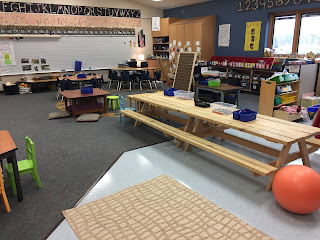I
recently ran across an article written by Katrina Fried, author of American Teacher: Heroes in the Classroom, in which she quotes teachers from all over the nation.
Here
are few of my favorites:
 |
| Think back. Which teacher is still your hero? |
- Rules are made to be broken: “Really good education is all about risk-taking and making a mess; learning is chaotic, right?” Michael Goodwin, English teacher at Concord Carlisle Regional High School in Concord, MA.
- Never teach to the test: “Exceptional test scores, brilliant job applicants, and competitive colleges should simply be by-products of great education, not the sole purpose of it.” Josh Anderson, debate coach at Olathe Northwest High School, Olathe, KS.
- There is no such thing as an un-teachable child: “My students are kids just like any other kids. Of course they can learn. Of course they can love school. Of course they can build good relationships. Of course they have a voice. They just need to learn how to use it.” Julia King, math and reading at DC Prep Edgewood Middle Campus in Washington, DC.
- The future is now: Technology has changed my teaching and directly affected my students’ learning. It is not that I consciously try to plan a lesson that has technology in it. It’s just that it’s woven in. It’s almost invisible.” Jo-Ann Fox, 4th grade teacher at Reidy Creek Elementary School in Escondido, CA.
- You can’t do it alone: “Success does not occur in isolation. It’s only because of the teacher next door, the teacher down the hall. It’s because of the secretaries. It’s because of the administration. It’s because of a whole staff working together to try and make good things happen. The magic formula in education is not hiring the right person. It’s hiring the right group of people who all want to achieve the same goals.” Jeffrey Charbonneau, science teacher at Zillah High School, Zillah WA.
I’m
going to give the final word on good teaching to Jay Hoffman, a middle school
teacher at Frederick H. Tuttle Middle School in South Burlington, VT:
Be
a student of your students:
“Teaching reflects you. If you look at
that reflection, you will really learn about yourself. That humbles me and brings me to tears when I
talk about it. Because in the beginning,
I was scared of what I saw. Kids find the
cracks in your armor. It is not that
they set out to, they just do. But if
you are willing to step back and reflect, you can grow so much. It is a wonderful, unexpected caveat. You think you are going to teach, but boy, do
you learn. I have come to understand
that, truly, I am my students’ student.”
We
would love to hear teacher “rules” you live by.
If you have one (or more) send them our way. We can find ways to share these with
others. After all, we can’t do it alone.
Have
a great week, HSE. When you get a chance, send us the rules you
live by, the rules you break, and the rules that inspire you and your students.
Your HSE Teaching and Learning Team
- Jan Combs, Assistant Superintendent of Teaching and Learning
- Stephanie Loane, Director of Elementary Education
- Tom Bell, Director of Special Education
- Jeff Harrison, Director of Educational Technology
- Phil Lederach, Director of Secondary Education


















